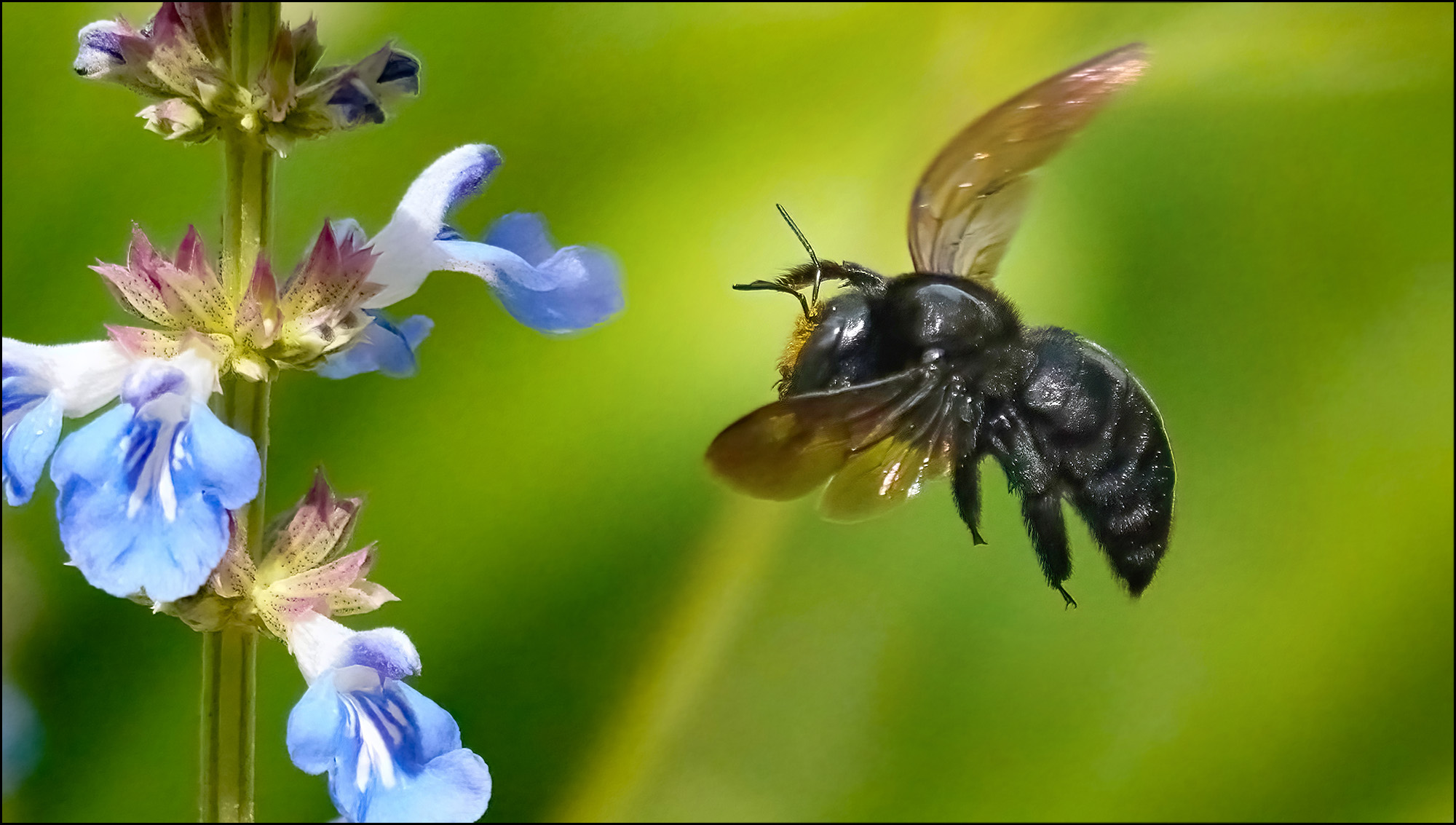Marian curated today's selection, a pair of photos of a big black carpenter bee in our front yard. It turns out that this bee is easier to photograph than a regular bee because it's a lot slower. He doesn't show up very often, but when he does he makes a great subject.



Bumbles Bounce!
Isn't she a she?
I dunno. How do you tell?
I thought most bee species were predominately female with males that are drones and don't usually survive without assistance from workers...
So a flying, supposedly nectar gathering bee would be a worker and female.
Full disclosure, I'm not an expert. But I did watch Aliens.
Social bees that live in large hives (such as honeybees) are predominantly female. But that's not true of solitary bees and bees that live in smaller colonies. In some bumblebee species, males are more common than females.
Huh. I stand at fifty-fifty corrected. 😎
As to the blogger's question, is there a way to determine sex via photography?
It looks like this WordPress template limits comment nesting depth; I never noticed that before.
I think most bees can be sexed visually, although in some cases it takes a very close examination. In carpenter bees, the two sexes are sometimes different colors. If this one is a valley carpenter bee, then it's a female, as the male is cinnamon-colored. If it's a California carpenter bee, then the difference is more subtle, and it's hard to tell the sexes apart without a much closer look.
At first, I thought the yellow patch on the bee's forehead was part of the bee, but it appears to be pollen.
I haven't seen a black bumblebee in ages, are they all dying like the other bees?
It's got a black, shiny abdomen. Doesn't that mean it's a carpenter bee, not a bumblebee?
That looks like a carpenter bee (Xylocopa), rather than a bumblebee (Bombus). Probably valley carpenter bee (X. sonorina) or California carpenter bee (X. californica).
You should watch it to see where it's going after it visits the flowers. It may very well be digging brood tunnels in exposed wood around or in your house.
Same thoughts as well. Definitely carpenter bee.
How to escape killer bees,
https://i.imgur.com/AZK41L7.jpg
great photos regardless of gender of bee!
Years ago, when KNX AM-1070 was a legitimate CBS all-news radio station in LA and all the anchors were dead serious about everything, I heard a story about Los Angeles County releasing millions of sterile female mosquitos in an effort to quell an outbreak of... something. At the end of the segment, the field reporter made an attempt at some news humor, and asked the anchor, whom I think was the great Harry Birrell, how the county could tell which mosquitos were the females. Birrell, without missing a beat, replied "They're the ones with headaches."
It might work with bees, too.